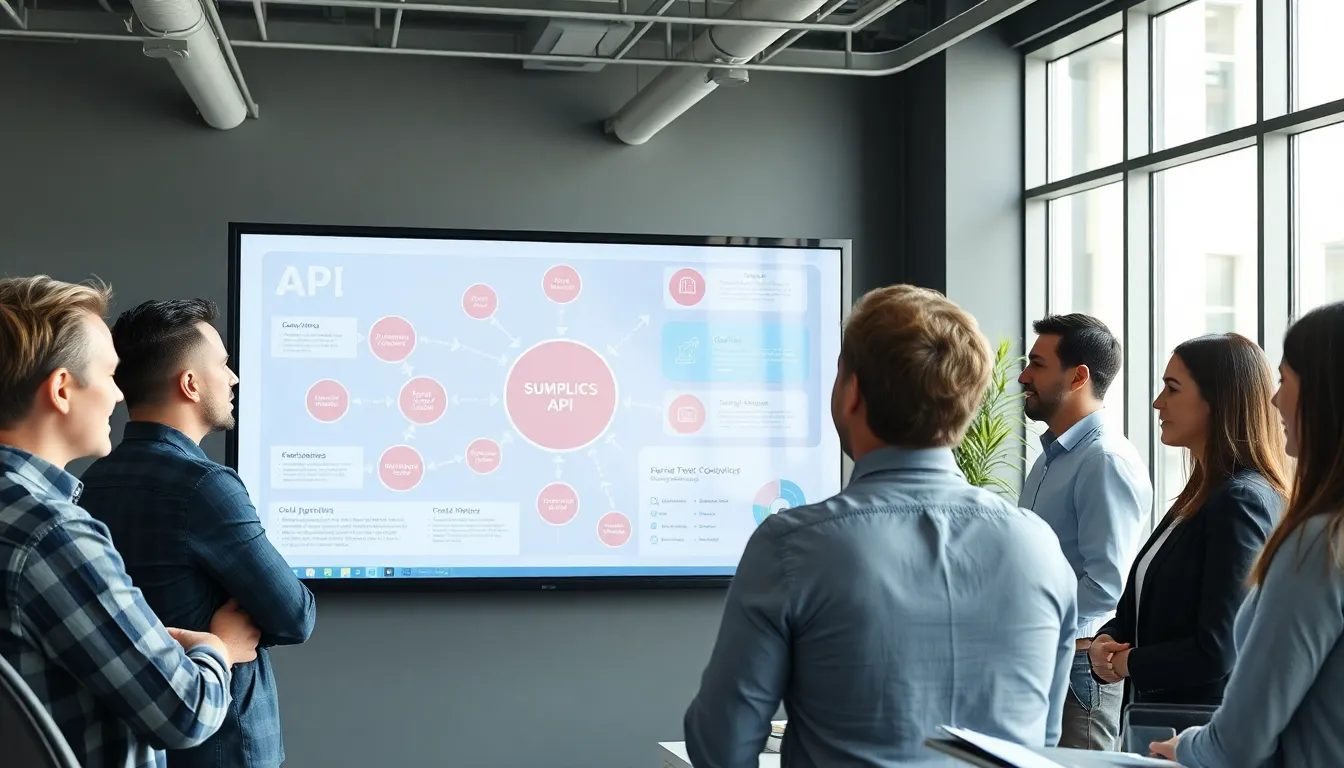In today’s digital jungle, external integrations and APIs are the vines that connect various software systems, making them swing smoothly from one task to another. Imagine trying to juggle flaming torches while riding a unicycle; that’s what managing software without proper integration feels like. With the right architecture, it’s not just about keeping the flames at bay—it’s about dazzling your audience with a seamless performance.
Understanding external integrations and APIs isn’t just tech jargon; it’s the secret sauce to building robust software ecosystems. They enable different applications to chat, collaborate, and create magic together. So buckle up and get ready to dive into the world of software architecture where APIs reign supreme and integration is the name of the game.
Table of Contents
ToggleUnderstanding External Integrations APIs Software Architecture
External integrations and APIs play a vital role in modern software architecture, enabling seamless communication between various applications and services. A foundational understanding of key concepts is essential for developers and architects in this dynamic field.
Key Concepts and Terminology
APIs, or Application Programming Interfaces, define the methods and protocols for different software components to interact. REST (Representational State Transfer) remains a popular architectural style, promoting stateless communication. GraphQL, another API technology, allows clients to request specific data. JSON (JavaScript Object Notation) serves as a lightweight data interchange format, making data exchange straightforward. Understanding whether to use synchronous or asynchronous communication helps in designing responsive systems. Lastly, webhooks provide a mechanism for real-time updates, allowing systems to react promptly to events.
Importance of External Integrations
External integrations enhance system functionality by connecting disparate applications. They enable data exchange, improving workflows and creating more robust systems. Utilizing third-party services expands capabilities without requiring in-house development efforts. Flexibility grows through integration, allowing organizations to adapt quickly to market changes. Improved user experiences stem from cohesive interfaces, resulting from successful integration efforts. Reducing development time and costs becomes practical by leveraging existing tools and services, which can lead to faster time-to-market for new features.
Types of External Integrations APIs

External integrations APIs come in various forms, each serving distinct functions within software architecture. Understanding these types aids in selecting the right integration strategy.
RESTful APIs
RESTful APIs leverage HTTP requests to enable communication between a client and server. This architecture provides a stateless interaction model, which simplifies the process of exchanging data. Common HTTP methods, such as GET, POST, PUT, and DELETE, facilitate CRUD operations on resources. JSON is typically utilized for data formatting, ensuring that responses are lightweight and easy to parse. REST’s scalability contributes to its popularity, allowing applications to handle varying loads effectively. Many prominent platforms adopt RESTful APIs for their ease of use and compatibility with web standards.
GraphQL APIs
GraphQL APIs offer a flexible alternative to traditional RESTful APIs. This query language enables clients to request exactly the data they need, reducing over-fetching and under-fetching issues often seen with REST. Clients interact with a single endpoint instead of multiple, streamlining the data retrieval process. By allowing requests for nested resources in a single call, GraphQL enhances efficiency in fetching related data. This API type has garnered attention for its strong typing system, which improves validation and introspection during development. Many organizations choose GraphQL for its adaptability to rapidly changing data needs.
Designing Effective Software Architecture
Effective software architecture relies on solid planning and integration of APIs. Understanding architectural styles enhances how various systems communicate and operate together.
Architectural Styles for API Integration
Numerous architectural styles exist for API integration, each with unique strengths. REST remains popular due to its simplicity, allowing applications to perform operations through standard HTTP methods. RESTful APIs provide statelessness, which improves scalability, making them suitable for varied web applications. GraphQL, on the other hand, emphasizes flexibility by enabling clients to request only the data they require. This minimizes data transfer and optimizes performance. Other options, such as SOAP, focus on structured messaging that emphasizes security and formal contracts. Organizations often choose based on project requirements, evaluating factors like performance, scalability, and ease of use.
Best Practices for Consistency and Security
Consistency and security play crucial roles in API integration. Adhering to established standards ensures uniformity, which simplifies development and maintenance. Versioning APIs prevents disruption during updates, allowing users to adapt smoothly. Implementing authentication methods like OAuth enhances security, safeguarding sensitive data. Regular audits and monitoring of APIs help identify vulnerabilities before exploitation occurs. Additionally, efficient error handling improves user experience, providing meaningful feedback during failures. Prioritizing these best practices creates a robust architecture that promotes seamless interaction between integrated systems.
Challenges in External Integrations
External integrations often present significant challenges. Organizations encounter various issues when linking disparate systems through APIs.
Common Issues and Solutions
Integrators face issues such as compatibility between different systems and data formats. An approach to mitigate these problems includes utilizing middleware solutions that translate various formats and protocols. Instance mismatches may occur, resulting in integration failures. Implementing standards can reduce these risks. For instance, JSON serves as a common data format that aids interoperability. Thorough documentation plays a vital role in helping developers understand how to connect different systems. Clear guidelines reduce errors and streamline integration efforts. By focusing on these issues and adopting practical solutions, organizations achieve smoother integration processes.
Managing Data Integrity
Maintaining data integrity presents another challenge when dealing with external integrations. Data inconsistencies might arise due to differences in source systems. To combat this, organizations implement validation rules and checks during data transfer. Consistent data formats enhance accuracy and choice of communication method also impacts integrity. For example, synchronous communication ensures instant updates that minimize discrepancies. Organizations often employ logging and monitoring mechanisms to track data changes and identify issues. Engaging in regular audits also bolsters confidence in data accuracy. Prioritizing these strategies fosters reliable integrations and strengthens overall system performance.
External integrations and APIs are pivotal in modern software architecture. They enable diverse applications to communicate seamlessly and enhance overall system functionality. By adopting best practices and understanding various integration types like REST and GraphQL, organizations can build robust ecosystems that adapt to evolving needs.
The challenges associated with external integrations can be effectively managed through strategic planning and the use of middleware solutions. Prioritizing data integrity and thorough documentation further streamlines the integration process. Ultimately, embracing these principles not only improves workflows but also enriches user experiences, positioning organizations for success in a competitive landscape.






